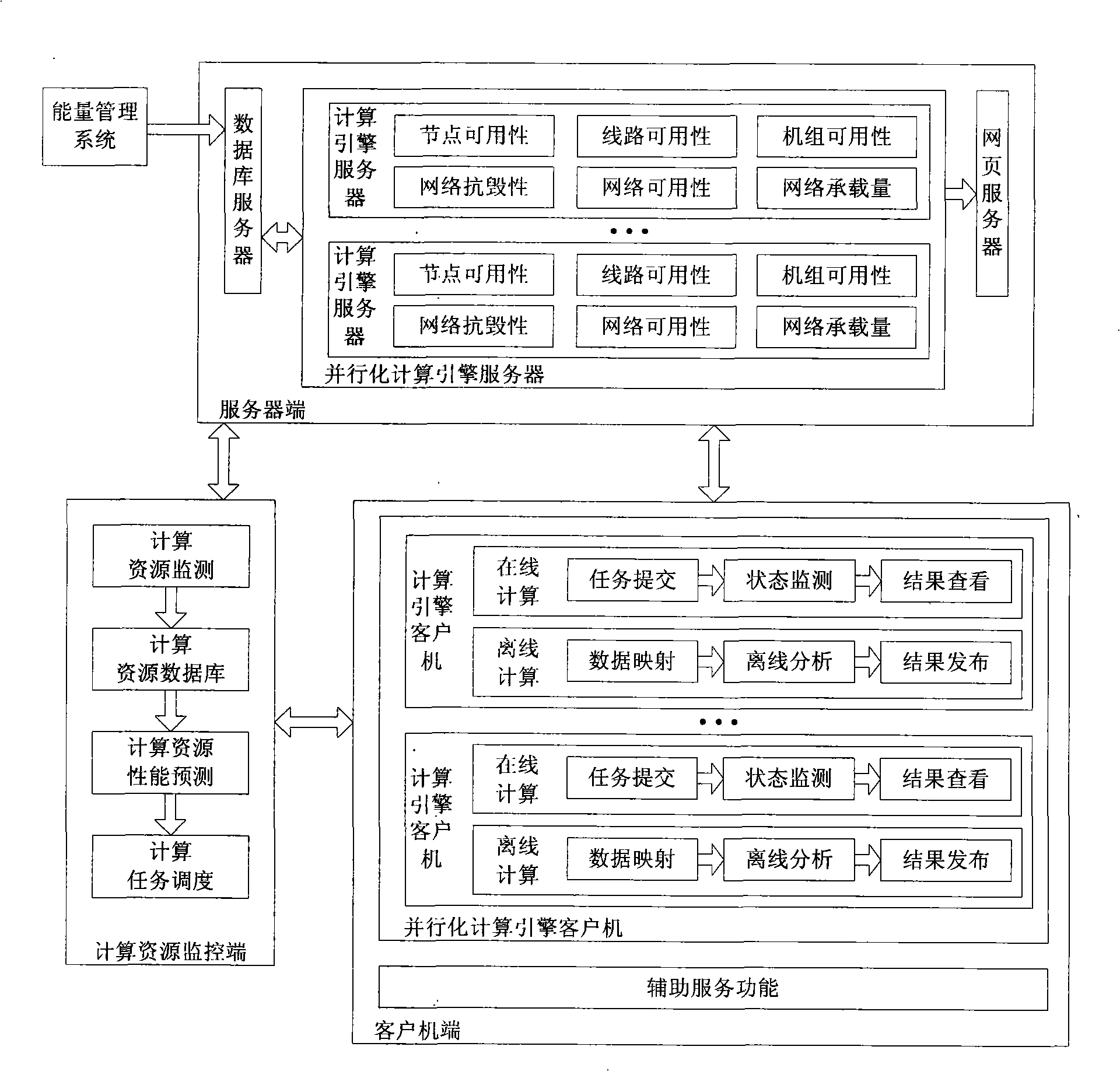Scalable distributed system supporting dynamic secure estimation and alarm of a power system
A distributed system and power system technology, applied in the field of power systems, can solve the problems of limited power system vulnerability analysis indicators, weak computing resource scheduling management functions, etc., to achieve strong flexibility and improve efficiency
- Summary
- Abstract
- Description
- Claims
- Application Information
AI Technical Summary
Problems solved by technology
Method used
Image
Examples
Embodiment Construction
[0014] The embodiments of the present invention are described in detail below in conjunction with the accompanying drawings: this embodiment is implemented on the premise of the technical solution of the present invention, and detailed implementation methods and specific operating procedures are provided, but the protection scope of the present invention is not limited to the following the described embodiment.
[0015] Such as figure 1 As shown, the system of this embodiment uses a microcomputer and a high-performance computer as a platform, and introduces a computing resource monitoring terminal between the server end and the client end to perform computing resource monitoring and computing task scheduling, including: server end, client end, and computing resource monitoring end. The monitoring end and the server end obtain real-time power system data from the energy management system and store them in the database server. The data resources of the database server are sent i...
PUM
 Login to View More
Login to View More Abstract
Description
Claims
Application Information
 Login to View More
Login to View More - R&D
- Intellectual Property
- Life Sciences
- Materials
- Tech Scout
- Unparalleled Data Quality
- Higher Quality Content
- 60% Fewer Hallucinations
Browse by: Latest US Patents, China's latest patents, Technical Efficacy Thesaurus, Application Domain, Technology Topic, Popular Technical Reports.
© 2025 PatSnap. All rights reserved.Legal|Privacy policy|Modern Slavery Act Transparency Statement|Sitemap|About US| Contact US: help@patsnap.com

